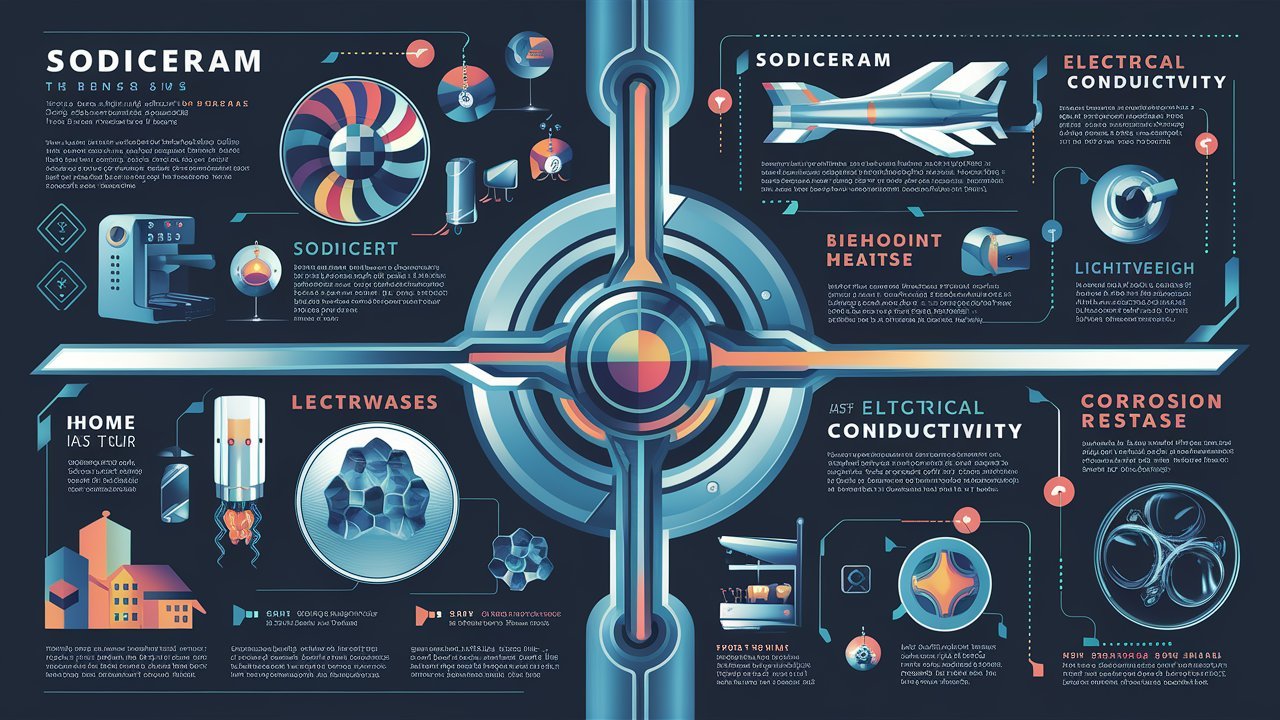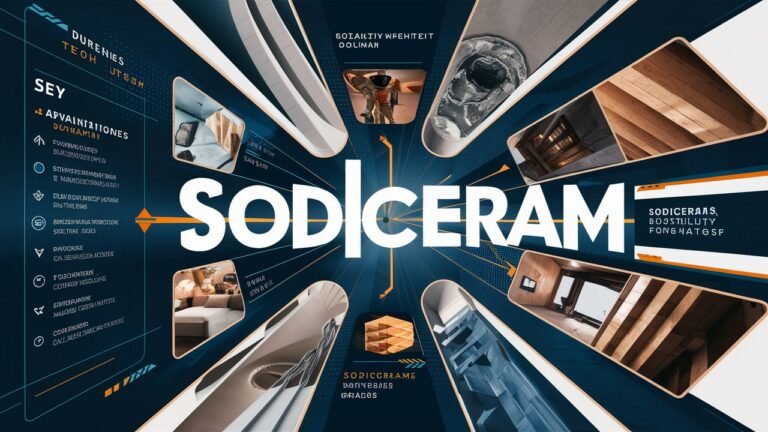In recent years, Sodiceram has emerged as a groundbreaking material in various industries, from construction to manufacturing. Its unique properties, including durability, cost-efficiency, and environmental benefits, have made it a preferred choice over traditional materials. But what exactly is Sodiceram, and why is it gaining such rapid popularity? This article explores everything you need to know—from its scientific composition to real-world applications, comparisons with conventional materials, and where to purchase the best quality Sodiceram. Whether you’re an industry professional or simply curious about innovative materials, this guide will provide valuable insights.
What is Sodiceram?
Sodiceram is an advanced engineered material known for its high resistance to heat, corrosion, and mechanical stress. Unlike traditional ceramics or metals, Sodiceram combines the best properties of multiple materials, making it ideal for demanding applications. Its molecular structure is designed to enhance performance in extreme conditions, which is why industries such as aerospace, automotive, and construction are increasingly adopting it. The key advantage of Sodiceram lies in its ability to reduce maintenance costs while improving longevity, making it a sustainable and economical choice.
Benefits of Sodiceram
One of the primary reasons behind the growing demand for Sodiceram is its exceptional durability. Unlike conventional ceramics that may crack under high pressure or metals that corrode over time, Sodiceram maintains structural integrity even in harsh environments. Additionally, it is lightweight, which makes it easier to transport and install compared to steel or concrete. Another major benefit is its thermal resistance, allowing it to withstand extreme temperatures without degrading. This makes it perfect for industrial furnaces, engine components, and even high-tech electronics.
Moreover, Sodiceram is eco-friendly. Many traditional materials require energy-intensive production processes, but Sodiceram can be manufactured with lower carbon emissions. Its recyclability further enhances its appeal in an era where sustainability is a top priority. Companies looking to reduce their environmental footprint are increasingly turning to Sodiceram as a viable alternative.

Sodiceram vs. Traditional Materials
When comparing Sodiceram to conventional materials like steel, aluminum, or standard ceramics, several distinctions become clear. Steel, while strong, is prone to rust and heavy, increasing transportation costs. Aluminum is lighter but lacks the heat resistance needed for high-temperature applications. Traditional ceramics are brittle and can fail under sudden stress.
Sodiceram, on the other hand, offers a balanced combination of strength, lightweight properties, and thermal stability. For example, in the automotive industry, Sodiceram-coated engine parts last longer than metal equivalents because they resist wear and heat damage. In construction, Sodiceram-reinforced structures require less maintenance than concrete, which can crack over time. These advantages make it a superior choice for modern engineering challenges.
Applications of Sodiceram
The versatility of Sodiceram allows it to be used across multiple sectors. In aerospace, it is used in turbine blades and heat shields due to its ability to endure extreme conditions. The medical field benefits from its biocompatibility, making it suitable for implants and surgical tools. Electronics manufacturers use Sodiceram in circuit boards and insulating components because of its non-conductive and heat-dissipating properties.
Even everyday consumer products are incorporating Sodiceram. Kitchenware, such as non-stick pans and oven linings, now utilize this material for better heat distribution and scratch resistance. As technology advances, we can expect even more innovative uses for Sodiceram in various industries.
Where to Buy High-Quality Sodiceram
If you’re considering integrating Sodiceram into your projects, sourcing it from reputable suppliers is crucial. Look for manufacturers with certifications and positive customer reviews. Some leading suppliers specialize in industrial-grade Sodiceram, while others focus on consumer products. Always verify the material specifications to ensure it meets your requirements. Bulk buyers should request samples and test the product before committing to large orders.
Conclusion
Sodiceram represents a significant leap forward in material science, offering unmatched durability, efficiency, and sustainability. Its applications span multiple industries, proving its versatility and long-term value. As more businesses recognize its benefits, Sodiceram is set to become a standard in high-performance materials. Whether you’re an engineer, a procurement specialist, or simply interested in innovative technologies, understanding Sodiceram can help you make informed decisions for future projects.
FAQ Section
1. What is Sodiceram made of?
Sodiceram is a composite material engineered from advanced ceramics and reinforced polymers, designed for high strength and thermal resistance.
2. Is Sodiceram more expensive than traditional materials?
Initially, Sodiceram may have a higher upfront cost, but its longevity and low maintenance make it more cost-effective over time.
3. Can Sodiceram be recycled?
Yes, one of its key advantages is recyclability, making it an environmentally friendly option.
4. Where is Sodiceram commonly used?
It is used in aerospace, automotive, medical, electronics, and even consumer goods like kitchenware.
5. How does Sodiceram compare to carbon fiber?
While carbon fiber is lightweight and strong, Sodiceram offers better heat resistance and durability in extreme conditions.
